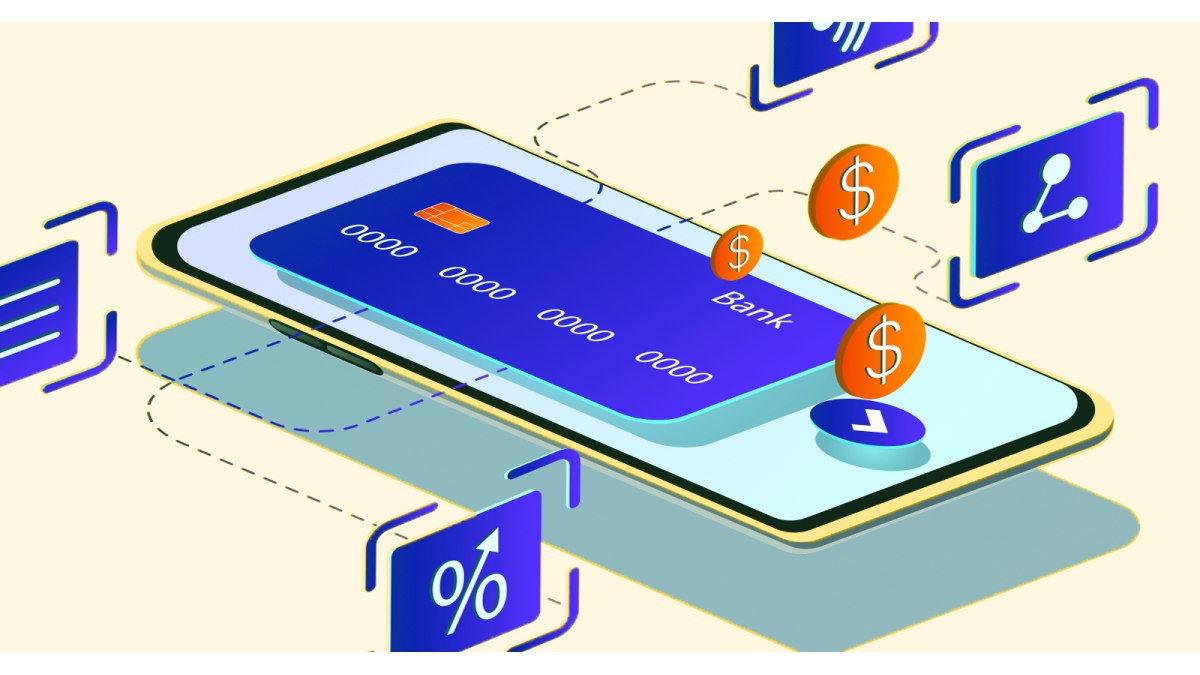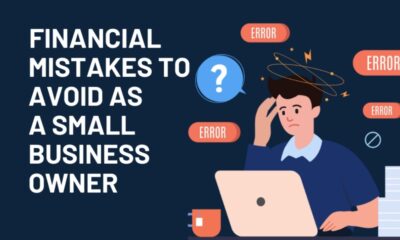Business
How is FinTech Being Affected by Embedded Finance and What Is It?

This guide will explain embedded finance, explain how it appears in our daily lives, and go over its advantages and potential drawbacks.
Embedded finance is one of those terms in the financial world that you may be familiar with but not fully grasp. Although many people might find it difficult to define, its frequent use would suggest that it is something we engage with on a regular basis.
In actuality, one of the most innovative uses of technology in the finance industry nowadays is embedded finance. We use embedded finance daily, and without it, our lives would be considerably less convenient, as you may not be aware. We’ll define it, explain how it manifests in our daily lives, and go over any potential drawbacks in this guide.
Defining Embedded Finance
Essentially, embedded finance is nothing more than the application of financial technologies to non-financial domains. Payment processors and banking apps are examples of common financial applications. Payments and other financial transactions are the main purpose of these applications.
Applications for food delivery, ridesharing, clothes shopping, and other non-financial uses are examples. The main motivation behind creating these applications was non-financial. You can, however, carry out financial transactions inside of them. These consist of paying bills on time, making credit purchases, and so forth. Although it means that users can complete transactions on these apps, this does not alter the nature of these applications. For instance, you use PayPal to pay for a meal delivery through an app. Although it does not imply that the app has turned into a financial app per se, it does indicate that there has been some communication between it and different financial institutions.
Because embedded finance has connected financial and non-financial apps in ways we never could have imagined, it has revolutionized the consumer market. Every day, billions of dollars worth of transactions are completed through it, and customers benefit from practically unheard-of convenience.
How It Works
Now that we understand what embedded finance is, it is worthwhile to investigate its initial operation. Application programming interfaces are the fundamental component of embedded finance. (APIs). In essence, APIs are the backend of different programs and applications that are used to provide clients with services. You are interacting with a shopping app’s API when you log in and browse through its options. For example, the app’s API is connected to PayPal, allowing payment through it when you choose to purchase it.
When you make a purchase using a non-financial app, you are typically prompted to connect to another financial institution, enter or save your card information, or log into your PayPal account to approve the transactions. This process is essentially the interaction between the non-financial app you are using and the APIs of your payment provider. In a word, embedded finance is the integration of this financial service that makes it possible for you to do this.
Consider all of the applications you use to make purchases, purchase items on credit, and so forth to get a sense of the sheer scope of embedded finance.
Embedded Finance: Examples
We constantly come into contact with embedded finance because it is all around us. These examples demonstrate embedded finance:
- Embedded lending. Going to a bank to request a loan is typically what comes to mind when we think of lending. It is possible to establish credit lines in non-financial institutions through embedded finance, though. Consider e-commerce companies that let you use financial services like Klarna in-app to pay for items over time.
- Embedded payments. Consider every app that lets you use your current payment methods to make in-app purchases of products and services, ranging from games to apparel. Embedded finance finds its most common application in this way.
- Investments. In addition to payment processing, platforms incorporate investment software into their APIs. With these, users can use a single app to invest in stocks and other assets.
- Insurance. These days, customers can buy insurance policies along with consumer goods like computers and phones, or even just tickets for trains and flights. Because of embedded finance, consumers can purchase these policies more easily by visiting the websites or applications of these non-financial institutions.
- Banking. These days, it’s not unusual for non-banking companies like Uber to provide their clients with bank-like services that allow them to send and receive money, check their balances, and make payments using specific cards. These services are a prime example of embedded finance since they are essentially banking services integrated into these non-financial platforms.
Benefits & Challenges
Because embedded finance provides users with the following advantages, it has become widely used:
- Ease of use. You couldn’t buy anything on a non-financial platform all at once in a world without embedded finance. The customer experience has been simplified and streamlined as a result of technology.
- Brand loyalty. Customers are more inclined to use multiple brands since these procedures are more efficient and transactions can be finished on a single platform. Furthermore, loyalty programs are made possible and more efficient by embedded finance.
- Access to innovative services. Customers now have easier access to financial services like buy-now-pay-later plans and insurance for items like train tickets.
- Greater diversity for the users. With embedded finance, consumers have access to a variety of in-app payment methods for goods and services. Users have more options than ever before, including Apple Pay, PayPal, and debit cards.
However, there are certain difficulties with embedded finance, some of which are listed below:
- Security risks. Customers can pay using a variety of methods on multiple platforms thanks to embedded finance, but there is a significant risk involved. Providing your payment details on numerous websites over time increases the likelihood of them being compromised.
- Higher expenses for companies. There are expenses associated with using embedded finance to provide services to customers for businesses. This entails upgrading systems when a new payment method is required as well as updating security measures to stop breaches.
- A rise in complexity. These non-financial platforms have more options for obtaining financial services, which makes them more difficult to use. Businesses will need to invest more time and energy in managing these intricate systems, and customers may feel overburdened. Furthermore, the businesses in question need to manage the different regulations that apply globally to the use of embedded finance.
Embedded Finance and FinTech
Fintech solutions are frequently integrated with banking and payment services on non-financial platforms as part of embedded finance. Fintech can be integrated into a non-financial platform, for instance, by opening a line of credit with an online retailer and paying for goods in installments.
However, embedded fintech is a completely different idea and should not be confused with this.
Thus far, fintech appears to have a big impact on embedded finance, and as more fintech solutions emerge, we can anticipate seeing them appear on other non-financial platforms as well.
Conclusion
The distinction between the non-financial platforms we use and the financial platforms we rely on is becoming increasingly blurred. From the comfort of applications and platforms that weren’t created for financial purposes, we can spend money from our bank accounts, make credit purchases, invest in stocks, and take advantage of other financial services. All of this is possible because of embedded finance’s innovation.
Not only has embedded finance made life more convenient for customers, but also for the companies that cater to them. Despite certain drawbacks, such as higher expenses and security threats, embedded finance has turned out to be beneficial for the financial and business sectors overall. Furthermore, they will continue to be a mainstay of contemporary society as more financial innovations reach the market and consumer demands rise.
-

 Business3 weeks ago
Business3 weeks agoNayef Doleh Examines International Humanitarian Fundraising Strategies
-

 Business3 weeks ago
Business3 weeks agoHow to fill MSME Form 1? Step-by-Step Guide
-

 Business4 weeks ago
Business4 weeks agoHow Black Banx is Redefining Global Banking Strategies in 2025
-

 Festivals & Events3 weeks ago
Festivals & Events3 weeks agoInteresting Facts about St. Patrick’s Day
-
Business3 weeks ago
From Marine to Chief: The Leadership Journey of Sean Mannix
-

 Tech4 weeks ago
Tech4 weeks agoMicrosoft Teams to End SMS Messaging Feature Support for Android Phones and Switch to Phone Link App as Alternative
-

 Food4 weeks ago
Food4 weeks agoGeorgiy Balyuk Highlights Savannah’s Charm and Houston’s Best Eats
-

 Gadget2 weeks ago
Gadget2 weeks agoAfter Grand Success on BLDC Ceiling Fan, Eff4 Is Launching Smart Bulb

























